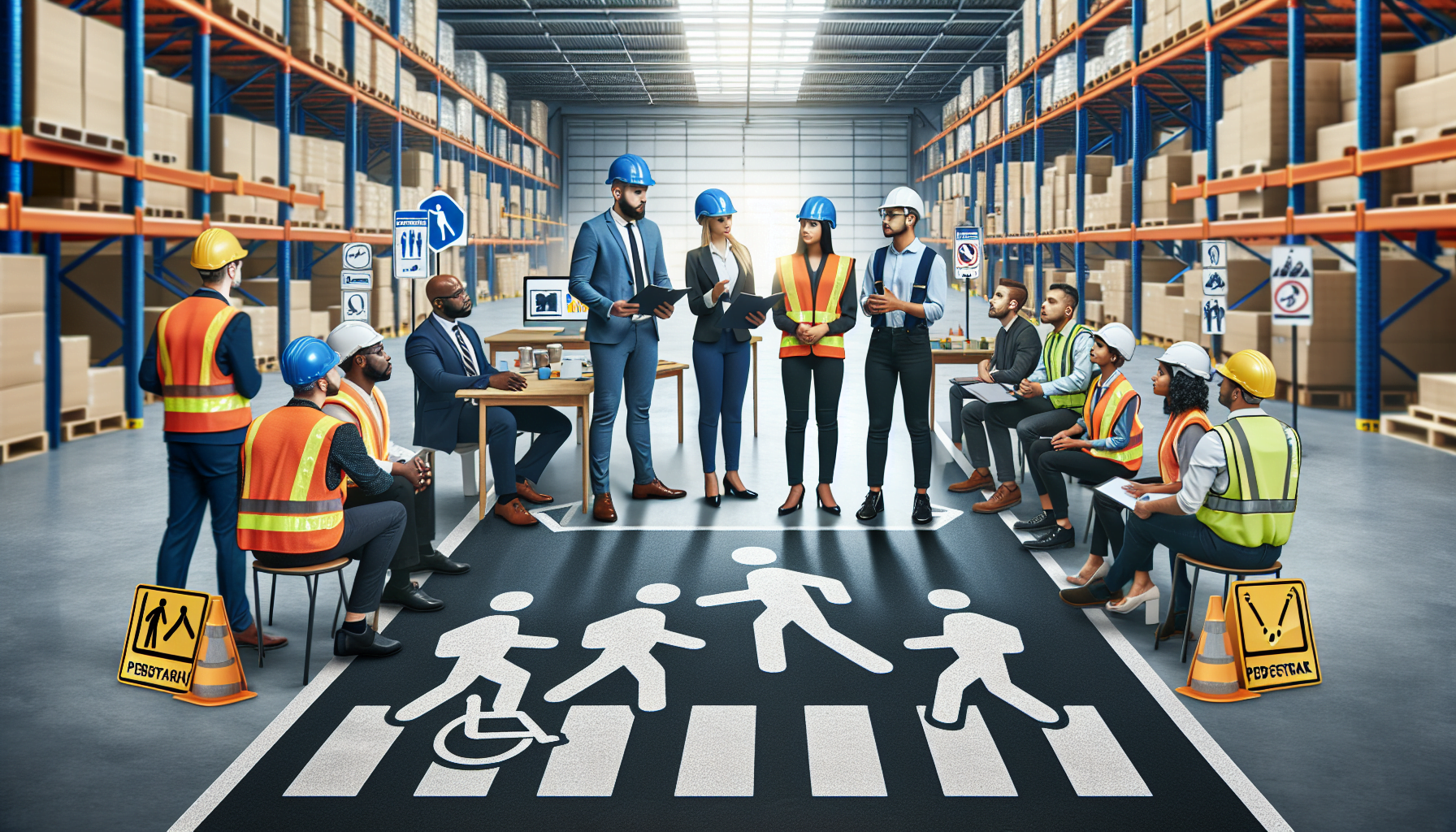Warehouse operations can be a bustling environment with numerous activities taking place simultaneously. From the movement of forklifts and other machinery to the handling of inventory, there are various potential hazards that can pose risks to both workers and pedestrians. That’s why safety meetings focused on warehouse pedestrian protection are of utmost importance.
The Need for Safety Meetings
Safety meetings play a crucial role in creating awareness and establishing best practices for maintaining a safe working environment within the warehouse. These meetings provide an opportunity for management, supervisors, and employees to come together and discuss potential hazards, preventive measures, and safety protocols that need to be followed.
One area that requires special attention in warehouse safety meetings is pedestrian protection. Pedestrians, such as workers on foot, visitors, or delivery personnel, are at high risk of accidents due to the movement of forklifts and other powered industrial trucks. In fact, according to the Occupational Safety and Health Administration (OSHA), forklifts account for a significant number of workplace injuries and fatalities each year.
By dedicating a portion of safety meetings to warehouse pedestrian protection, companies can effectively address this specific safety concern and take proactive measures to mitigate risks.
The Role of Technology
Advancements in technology have revolutionized the way warehouses operate, including the introduction of innovative solutions for pedestrian protection. One such solution is the Forklift Pedestrian Detection System offered by HCO Innovations.
This cutting-edge technology utilizes sensors and cameras to detect the presence of pedestrians in the vicinity of forklifts and other industrial vehicles. It uses advanced algorithms to analyze the movements of both the forklift and pedestrians, providing real-time alerts and warnings to the forklift operator if a potential collision is detected. This allows the operator to take immediate action to prevent accidents and ensure the safety of pedestrians.
The Forklift Pedestrian Detection System not only enhances safety but also improves productivity and efficiency within the warehouse. By reducing the risk of accidents, companies can avoid costly downtime, damage to inventory, and potential liability issues.
Implications of Safety Meetings
Regular safety meetings focused on warehouse pedestrian protection can have several positive implications for businesses:
- Preventing Accidents: By discussing and reinforcing safety protocols, employees become more aware of potential hazards and take necessary precautions to prevent accidents. This reduces the likelihood of workplace injuries and provides a safer working environment for everyone.
- Increasing Safety Culture: Safety meetings provide an opportunity to develop and nurture a strong safety culture within the organization. When employees realize that their well-being is a top priority, they are more likely to actively participate in maintaining a safe work environment.
- Reducing Costs: Avoiding accidents and injuries leads to monetary savings in terms of medical expenses, workers’ compensation claims, and potential legal fees. Implementing safety measures can improve the company’s bottom line and protect its reputation.
- Enhancing Employee Morale: Knowing that their employer values their safety boosts employee morale and job satisfaction. Employees who feel safe and valued are more likely to be productive and committed to their work.
Best Practices for Safety Meetings
To ensure that safety meetings focused on warehouse pedestrian protection are effective, consider implementing these best practices:
- Regular Frequency: Conduct safety meetings at regular intervals, such as monthly or quarterly, to ensure that safety remains a constant focus in the workplace.
- Participation: Encourage active participation from all employees. Safety meetings should be open forums where employees can ask questions, provide feedback, and share insights.
- Training and Education: Provide comprehensive training and education on warehouse safety practices and the proper use of equipment. This empowers employees to make informed decisions and take appropriate actions to prevent accidents.
- Reporting System: Establish a reporting system for employees to report any safety concerns or near-miss incidents. This allows for timely intervention and corrective actions to be taken.
- Continuous Improvement: Regularly review and assess the effectiveness of safety measures and adjust them as needed. Encourage employees to provide suggestions for improvement.
Conclusion
Warehouse pedestrian protection should be a top priority for any company operating a warehouse facility. Safety meetings dedicated to this specific area not only help prevent accidents and injuries but also contribute to the overall well-being of the employees and the success of the business.
By leveraging technology such as the Forklift Pedestrian Detection System offered by HCO Innovations, and following best practices for safety meetings, companies can create a culture of safety, enhance productivity, and reduce costs associated with workplace accidents. Investing in warehouse pedestrian protection ultimately leads to a more efficient and successful operation.

